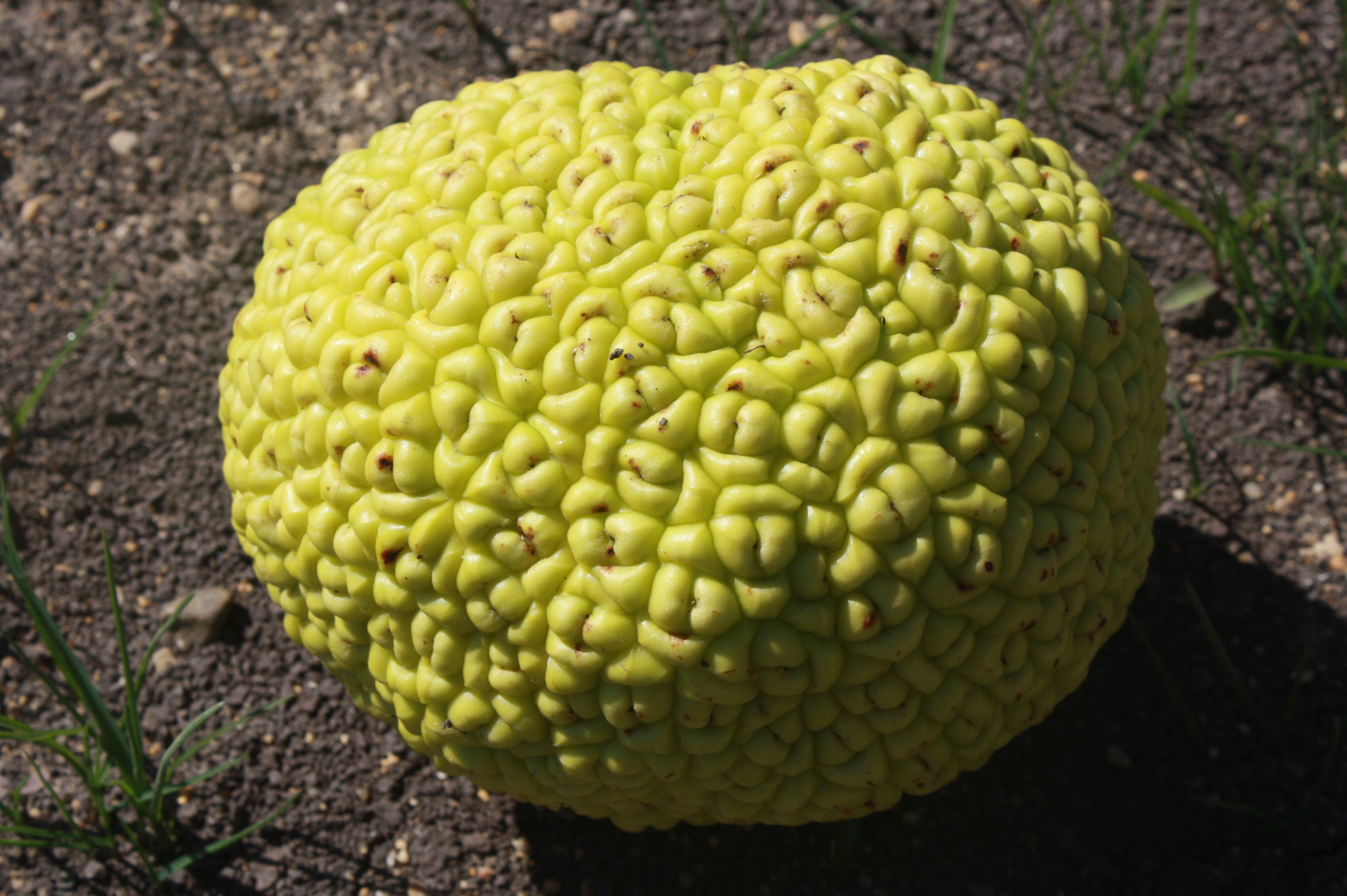 Not a pickle. It’s a hedgeapple. We used to (incorrectly) call them hedge balls, and one year, I even used it for an elementary pumpkin-decorating contest and took first place. Maybe there is a creative bone in me somewhere.
Not a pickle. It’s a hedgeapple. We used to (incorrectly) call them hedge balls, and one year, I even used it for an elementary pumpkin-decorating contest and took first place. Maybe there is a creative bone in me somewhere.
Here are a few little-known facts about the Hedge tree: The hedge tree has several names, Osage Orange (most popular) and Bodark (French) and Maclura pomifera (scientific name). Not all of the Osage Orange trees will have fruit because hedge trees are either male or female. Osage Orange is a cousin to the mulberry tree.
The Osage Orange was one of the primary trees used in President Franklin Delano Roosevelt’s “Great Plains Shelterbelt” WPA project, which was launched in 1934 as an ambitious plan to modify weather and prevent soil erosion in the Great Plains states, and by 1942 resulted in the planting of 30,233 shelterbelts containing 220 million trees that stretched for 18,600 miles. The sharp-thorned trees were also planted as cattle-deterring hedges before the introduction of barbed wire and afterward became an important source of fence posts. (Source: Wikipedia)
Today, the fruit is sometimes used to deter spiders, cockroaches, boxelder bugs, crickets and fleas. One of the guys working on our house told me to put it in my closet to keep away the bugs. I think I’ll toss it back along the side of the road where I found it, or maybe stick it in amongst the mix of pumpkins and gourds that decorate my kitchen island. I guess Osage Orange trees are most common in Arkansas, Texas and Oklahoma, but I know this for a fact – someone must have transplanted a whole lot of them to southeast Nebraska because they’re everywhere. Gives kids something fun to find for a scavenger hunt.
Until we walk again…

